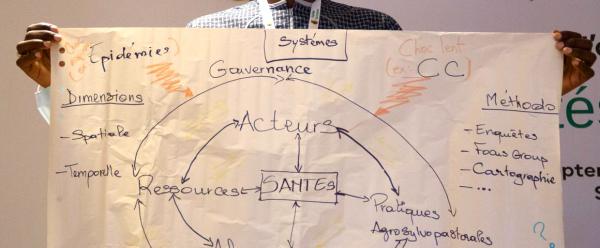Just out 3 November 2025
- Home
- CIRAD news
- News
- Territory-based approaches to achieving the SDGs
Sustainable development in silos doesn’t work: shifting to territory-based approaches

Farmland in Vietnam © GIZ / Binh Dang
The primary objective of agricultural activities is to ensure food security, but do they also contribute to job creation or the conservation of local flora and fauna? Do mining activities hamper the development of agricultural activities in a region?
“These questions illustrate the interdependence between the different activities conducted within a given territory”, says Élodie Valette, a geographer at CIRAD and co-author of the new white paper by the Territorial Approaches for Sustainable Development (TP4D) group. “Territory-based approaches help us to understand these interactions and to use participatory processes to design policies in line with local realities. The goal is to ensure that all activities in a territory are developed without hampering others, in a fair and sustainable manner”.
If territory-based approaches are designed in accordance with the specific nature of different contexts, they provide a solid framework for the analysis and implementation of development initiatives. They articulate a range of different sectors and stakeholders and activate processes for economic, ecological and social change, which are often complex, in each geographical space.
The implementation of territory-based approaches
In 2019, CIRAD and a number of partners signed a first white paper defining the founding principles for territory-based approaches. The partners in TP4D include FAO, OECD, UNCDF, NEPAD, GIZ, BMZ, AFD and the European Commission. These organizations all share the belief that territory-based approaches should be adopted wherever possible and that they provide added value in a given local context.
Four years on, the group has published a new white paper, this time on the operationalization of territory-based approaches. This paper clarifies the steps and principles to follow to implement effective territory-based approaches.
“We go beyond concepts and definitions, addressed in the first version of this white paper, to list nine recommendations that facilitate the implementation of territory-based approaches”, says Élodie Valette. “We explain, for example, that it is essential to institutionalize the territorial analysis stage. We also show just how important it is to take account of social dynamics and imbalances of power”.
National policies, a crucial support
To formulate these recommendations, TP4D based its work on substantial feedback from all over the world. The authors stress that all of this experience has demonstrated the central role of national policies, which are key drivers of the implementation of territory-based approaches, especially through decentralization policies.
Jérémy Bourgoin, a geographer at CIRAD and co-author of the white paper, explains that “decentralization encourages bottom up movements, in other words stemming from actors on the ground. It takes better account of their needs and facilitates empowerment dynamics. National policies create frameworks that strengthen rights, such as access to land or land use, and support the capacity building required at the local level”.



























